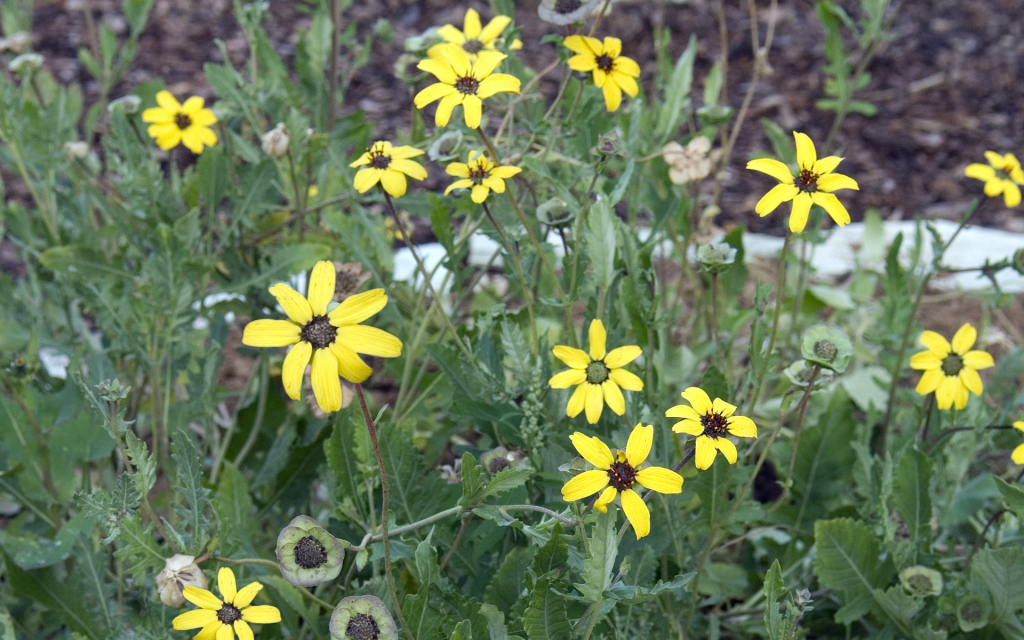By Valerie Podmore, CSU Extension-Denver Master Gardener since 2020

When I went on my (mostly) daily morning walk (I’m writing this in the 3rd week of August by the way), the temperature was a lovely mid 70’s and my walking buddy said, “this is a really nice morning, almost like fall.” As we’ve had so many hot, hot July and August days, the thought of experiencing cooler ones is quite appealing! I’m sure our plants will enjoy that as well (not the walking part of course haha). Let’s look at our gardening to-dos for this month.
Vegetable Garden
Ok I admit, my first attempts at veggie gardening are not going great, mostly because I’ve not watered properly, I think. It could also be the location has much more shade than initially imagined. Remember that right plant, right place mantra? I didn’t! In any case, here are some tasks to perform this month for those of you who actually have real vegetables growing.
- Continue to harvest any ripe summer vegetables and clear out fallen leaves, weeds and other disease-causing debris.
- Plant cool weather vegetables now as they mature quickly and love less heat. These include lettuce, kale, arugula, Swiss chard, and spinach. Here’s a timely post on how to extend our growing season.
- Don’t forget to continue watering because we all know that Colorado can throw crazy weather at us…and it follows then to prepare for cold weather snaps too. There’s nothing worse than working so hard to grow something only to have it destroyed by Mother Nature.
Trees and Shrubs
- Oh that watering thing again. It’s like some sort of Tamagotchi game (showing my age!) to make us desperately try to keep our plants alive! Keep an eye on the weather and water deeply when precipitation has been scarce. This information sheet has EVERYTHING you want to know about water.
- While we can prune, if necessary, try to avoid it during this month. Make note of branches that need attention and save the tasks for late winter or early spring.
- We may not realize it, but September’s cooler temperatures make it a good time to plant trees and shrubs as it gives enough time for the plant to acclimate in the warmer soil and prepare for the winter months. Here’s a great article on this very idea.
Lawn Care
- This is a great month to revive our lawns by aerating and fertilizing or overseeding bare spots.
- As mentioned above, watering is still important to keep our lawns healthy so let’s continue caring for our lawns as fall is not the time to stop the good lawn care practices we’ve undertaken throughout the year.
- Tired of dealing with lawn? Now’s the time to start to plan a turf conversion. This page offers practical tips.

Perennial Flower Beds
- This is a perfect time to start cleaning up our plants as they begin to go dormant, by clearing away dead and mushy leaves, fruits or weeds which can cause disease.
- This quick read has good advice on clearing up the garden in the fall and pollinator-friendly clean up tips can be found here.
- Divide early blooming perennials such as iris, lily, hostas, bleeding hearts, and other bulb or tuberous species to keep them from crowding each other too much.
- For anyone who has a spare hour and some, and REALLY wants to nerd out on fall plant advice, take a look at this awesome video!
Annual Flower Beds
Because I’m lazy, I prefer perennial plants but of course we can’t minimize the impact that annuals have in the garden. The colors and variety are just so great!
- Make note of those annuals that you will want to replace next year.
- Get your pots of Chrysanthemums or pansies busted out to provide fall color, as these plants prefer cooler weather and add that color we sometimes need to combat that seasonal affective disorder that we have (well I’m speaking for myself here!).
As always, visit the CSU Extension Yard and Garden website for more gardening tips.































